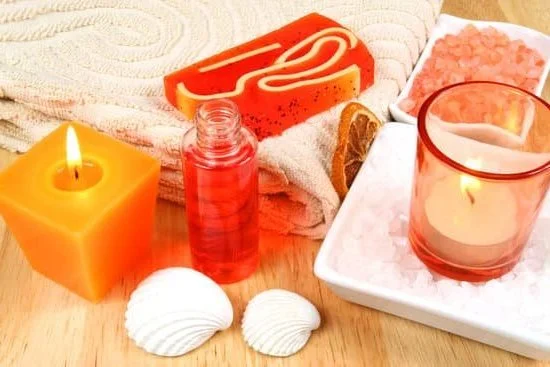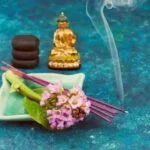Aromatherapy oils have long been used for their therapeutic properties and the numerous benefits they offer to our physical and emotional well-being. From relaxation to stress reduction, these oils have the power to enhance our mood and improve our overall health. But how do we use them effectively? In this article, we will explore the world of aromatherapy oils and delve into the various ways in which they can be utilized to harness their full potential.
Whether you’re new to aromatherapy or a seasoned enthusiast, understanding the different types of aromatherapy oils is crucial in order to make informed choices. Each oil has its own unique properties and benefits, making it important to choose wisely based on your specific needs and preferences. We will take a closer look at a variety of aromatherapy oils and delve into their individual characteristics.
Choosing the right aromatherapy oil can be overwhelming with the wide array of options available. Factors such as scent preference, intended purpose, and potential side effects need to be taken into consideration. To help simplify this process, we will provide tips for selecting the most suitable oils that align with your desired benefits. By understanding what to look for in an aroma oil, you can ensure maximum effectiveness and enjoyment.
In this comprehensive guide, we will also cover different methods of using aromatherapy oils. From diffusion techniques using various devices like diffusers or steam inhalation methods, to safe topical application on the skin for targeted healing benefits, we will explore each approach step-by-step. Additionally, we will touch upon the art of blending essential oils together to create customized combinations that amplify their therapeutic effects.
Overall, this article aims to equip you with a solid foundation in understanding aromatherapy oils – from their creation all the way through proper utilization techniques – while ensuring safety precautions are adhered to at all times. By delving into this world of natural remedies, you can unlock the potential of aromatherapy oils for a healthier, happier life.
Different Types of Aromatherapy Oils
Aromatherapy oils come in a wide range of varieties, each with its own unique properties and benefits. Exploring the different types of aromatherapy oils can help you find the ones that best suit your needs and preferences. Here, we will delve into some of the most commonly used types of aromatherapy oils and their distinct characteristics.
- Lavender Oil: Known for its calming and relaxing properties, lavender oil is often used to relieve stress, anxiety, and promote better sleep. It also has anti-inflammatory and analgesic properties, making it useful for soothing minor skin irritations or muscle pains.
- Peppermint Oil: Peppermint oil is invigorating and refreshing, known for its ability to boost energy and improve mental clarity. It can also provide relief from headaches and digestive discomforts due to its cooling and soothing effects.
- Eucalyptus Oil: With its strong aroma, eucalyptus oil is commonly used for respiratory issues such as congestion or sinusitis. Its expectorant properties make it helpful in relieving coughs and promoting easier breathing.
- Tea Tree Oil: Tea tree oil is well-known for its antiseptic properties and is often used topically to treat acne, fungal infections, or minor cuts and scrapes. It can also be used as an insect repellent.
- Lemon Oil: Lemon oil has a bright and uplifting scent that can help improve mood and boost energy levels. It may also have antimicrobial properties and can be included in homemade cleaning products.
It’s important to note that these are just a few examples of the many aromatherapy oils available on the market today. As you explore further, you’ll discover even more options with their unique properties waiting to be explored.
Understanding the Properties of Aromatherapy Oils
Each type of aromatherapy oil has its own distinct properties and potential benefits. These properties can be attributed to the specific chemical compounds found in the oil. For example, lavender oil contains linalool and linalyl acetate, which contribute to its calming effects. To fully understand the properties of aromatherapy oils, it can be helpful to research their chemical compositions and how they interact with the body.
Considerations for Choosing Aromatherapy Oils
When choosing aromatherapy oils, there are several factors to consider. Firstly, think about your intended purpose or desired benefits. Are you looking to relax and unwind, boost energy levels, or alleviate a specific symptom?
This will help guide you towards the most suitable oils for your needs. Additionally, consider any allergies or sensitivities you may have as certain oils can cause adverse reactions in some individuals. Lastly, take into account personal preferences such as scent and texture to ensure a pleasant experience when using the oils.
Exploring the different types of aromatherapy oils and their unique properties is an exciting journey that can enhance your well-being and promote relaxation. By understanding the various options available and considering factors such as desired benefits and personal preferences, you can choose the perfect aromatherapy oils for your self-care routine.
Choosing the Right Aromatherapy Oil
When it comes to using aromatherapy oils, choosing the right oil for your needs is essential. With so many different types of aromatherapy oils available, it can be overwhelming to know which one to choose. However, by considering a few factors and following some tips for selection, you can find the perfect aromatherapy oil that suits your preferences and desired benefits.
One important factor to consider when choosing an aromatherapy oil is the scent. Aromatherapy oils are derived from various plants and each plant has its own unique scent and properties. Some scents may be more calming and relaxing, while others may be energizing or uplifting. It’s important to select a scent that you enjoy and that aligns with the mood or atmosphere you want to create.
Another factor to consider is the therapeutic properties of the oil. Different oils have different benefits for physical and emotional well-being. For example, lavender oil is known for its calming effects and can help with relaxation and sleep, while peppermint oil is invigorating and can provide relief from headaches or congestion. Researching the properties of different oils can help you choose one that targets specific concerns or issues you may have.
Additionally, it’s important to consider the quality of the aromatherapy oil. Look for oils that are 100% pure and natural, as synthetic fragrances may not have the same therapeutic benefits. It’s also recommended to choose oils that are certified organic, as this ensures that they are free from pesticides or other harmful substances.
To make sure you select the right aromatherapy oil for your needs, here are some tips:
- Research different oils and their properties before making a decision.
- Consider any specific requirements or concerns you may have (e.g., allergies) when selecting an oil.
- Purchase from reputable suppliers who specialize in essential oils.
- Read customer reviews or seek recommendations from trusted sources.
- Start with small sizes or sample packs to try out different oils before committing to larger sizes.
By taking these factors into consideration and following these tips, you can confidently choose the right aromatherapy oil that suits your needs and preferences.
How to Use Aromatherapy Oils
Aromatherapy oils can be used in a variety of ways to reap their benefits. In this section, we will provide a step-by-step guide on how to use aromatherapy oils for proper application and techniques.
- Determine the purpose: Before using aromatherapy oils, it is important to determine your purpose or goal. Whether you want to relax, uplift your mood, enhance focus, or relieve specific ailments, knowing your desired outcome will help you choose the right oil and technique for your needs.
- Choose the right oil: As mentioned in the previous section, different types of aromatherapy oils have unique properties and benefits. Select an oil that aligns with your purpose. For example, lavender oil is known for its calming properties, while peppermint oil is invigorating and can boost energy levels.
- Dilute if necessary: Not all oils need to be diluted before use, but some concentrated oils can be too strong for direct application on the skin. In such cases, dilute the essential oil with a carrier oil like coconut or almond oil before applying it topically. The ratio typically recommended is 1-2 drops of essential oil per teaspoon of carrier oil.
- Topical application: Applying aromatherapy oils directly on the skin can provide numerous benefits. Some common areas for topical application include temples, pulse points (wrists and behind ears), soles of feet, and back of neck. Gently massage the oil into the skin using circular motions until it’s absorbed.
- Inhalation techniques: Inhalation is another popular method for using aromatherapy oils. Two common techniques are diffusers and steam inhalation. For diffusion, add a few drops of essential oil to a diffuser along with water and let it disperse throughout the room. Steam inhalation involves adding a few drops of essential oil to hot water in a bowl or facial steamer and inhaling the steam.
Remember to always consult a certified aromatherapist or do thorough research to ensure you are using the appropriate oils and techniques for your specific needs.
Aromatherapy Diffusers
Aromatherapy diffusers are devices that help disperse essential oils into the air, allowing their fragrance and therapeutic properties to be inhaled and absorbed by the body. There are several different types of diffusers available, each with its own benefits and advantages. Understanding the different types of aromatherapy diffusers can help you choose the one that best suits your needs and preferences.
- Nebulizing Diffusers: Nebulizing diffusers use a stream of air to break down essential oils into tiny particles, which are then released into the air in a fine mist. These diffusers do not require heat or water, making them an ideal choice for preserving the full therapeutic properties of the oils. Nebulizing diffusers are often recommended for larger spaces or when a more concentrated aroma is desired.
- Ultrasonic Diffusers: Ultrasonic diffusers work by using ultrasonic vibrations to break down essential oils mixed with water into a fine mist that is then dispersed into the air. This type of diffuser creates a humidifying effect in the room, making it beneficial for dry environments or during colder seasons. Ultrasonic diffusers also often come with built-in features such as color-changing lights or timers.
- Evaporative Diffusers: Evaporative diffusers rely on airflow to evaporate essential oils and release their scent into the air. These diffusers typically use a fan, heat, or a passive medium such as reeds to facilitate evaporation. While evaporative diffusers are generally more affordable, they may not provide as strong or long-lasting aroma compared to other types of diffusers.
| Diffuser Type | Benefits |
|---|---|
| Nebulizing Diffuser | – Preserves full therapeutic properties of essential oils
|
| Ultrasonic Diffuser | – Creates a humidifying effect
|
| Evaporative Diffuser | – More affordable
|
Choosing the right type of diffuser depends on your personal preferences, desired effects, and the size and layout of the space you plan to use it in. It’s important to follow the manufacturer’s instructions for each diffuser to ensure safe and effective use.
Regular cleaning is also essential to maintain the performance and longevity of your aromatherapy diffuser. Experimenting with different types of diffusers can help you find the one that suits you best and enhances your overall aromatherapy experience.
Topical Application
Using aromatherapy oils topically can provide various benefits, from promoting relaxation to improving skin health. However, it is important to use these oils safely and effectively to avoid any adverse reactions. Here are some tips and methods for safe topical application of aromatherapy oils:
- DILUTION: Aromatherapy oils are highly concentrated substances and should never be used directly on the skin without diluting them first. To dilute an essential oil, you can use a carrier oil such as jojoba oil, sweet almond oil, or coconut oil. The general rule of thumb is to use a 2-3% dilution rate, which means adding 12-15 drops of essential oil per ounce of carrier oil.
- PATCH TEST: Before applying an aromatherapy oil on a larger area of your skin, it is recommended to perform a patch test first. Apply a diluted solution of the essential oil on a small area of your inner arm and wait for 24 hours. If there is no redness, itching, or irritation, it is generally safe to apply the oil.
- MASSAGE: One popular method of topical application is through massage. Choose a carrier oil that suits your preference and add a few drops of your preferred aromatherapy oil to create a massage blend. Gently massage the blend onto your skin in circular motions or as desired. This not only helps with absorption but also enhances the overall relaxation experience.
- BATHING: Another way to enjoy the benefits of aromatherapy oils topically is by adding them to your bathwater. Add 5-10 drops of your chosen essential oil into a tablespoon of carrier oil or an unscented bath product (such as bath gel) before adding it to your bathwater. Swirl the water gently before getting in and enjoy a soothing, aromatic bath.
- TARGETED APPLICATION: Depending on your needs, you can also apply aromatherapy oils directly to specific areas of concern. For example, if you have a headache, consider diluting a few drops of peppermint oil in a carrier oil and applying it to your temples. If you have dry skin or a minor burn, lavender oil diluted in a carrier oil can help soothe and moisturize the affected area.
Remember, everyone’s skin is different, so it’s essential to pay attention to how your skin reacts to the aromatherapy oils. If any irritation or discomfort occurs after topical application, discontinue use and consult with a healthcare professional. Additionally, certain essential oils may not be suitable for children, pregnant women, or individuals with specific health conditions.
Always consult with an experienced aromatherapist or healthcare professional before using aromatherapy oils topically. With proper knowledge and care, you can safely incorporate aromatherapy oils into your skincare routine for maximum benefits.
Inhalation Techniques
One of the most popular and effective methods for using aromatherapy oils is through inhalation. By inhaling the aromas, you can experience the therapeutic benefits of the oils, as they interact with your olfactory system and have a direct impact on your mood and emotions. There are two main inhalation techniques: using diffusers and steam inhalation.
Aromatherapy diffusers are devices specifically designed to disperse essential oils into the air, allowing you to breathe in their aromatic properties. There are several types of diffusers available, including ultrasonic diffusers, nebulizing diffusers, and heat diffusers. Ultrasonic diffusers use vibrations to create a fine mist of water and essential oil particles that are then released into the air.
Nebulizing diffusers utilize pressurized air to disperse pure essential oil without any dilution. Heat diffusers gently warm the essential oil, causing it to evaporate and release its aroma into the surrounding area. Each type of diffuser has its own benefits and considerations, so it’s important to choose one that suits your preferences and needs.
Another inhalation technique is steam inhalation, which involves adding a few drops of essential oil to hot water and deeply inhaling the steam. This method is commonly used for respiratory issues such as congestion or sinusitis.
The hot steam helps to open up blocked nasal passages while delivering the therapeutic properties of the essential oil directly into your respiratory system. However, it’s important to exercise caution when using this method as some oils may be too strong for direct inhalation or may cause irritation if not properly diluted.
Whether you choose to use an aromatherapy diffuser or opt for steam inhalation, always remember to follow safety guidelines and use oils that are appropriate for each method. It’s also important to remember that not all essential oils are suitable for inhalation, as some can be irritating or even toxic when inhaled.
Always consult a qualified aromatherapist or do thorough research to ensure you are using the appropriate oils and techniques for your specific needs. With proper inhalation techniques, you can unleash the power of aromatherapy oils and experience their transformative effects on your overall well-being.
Aromatherapy Blending
In the world of aromatherapy, blending essential oils is an art that allows you to customize and create unique combinations for maximum therapeutic benefits. By combining different essential oils, you can enhance their individual properties and create a synergistic effect that can address specific physical or emotional concerns. Here are some tips and guidelines on how to blend essential oils effectively:
- Understanding Essential Oil Families: Essential oils belong to different botanical families, such as citrus, floral, woody, or herbal. Each family has its own unique characteristics and benefits. When blending essential oils, it is important to consider the properties of each oil and how they complement or contrast with one another.
- Note the Fragrance Notes: Essential oils have different fragrance notes – top, middle, and base notes. Top notes are light and evaporate quickly, while middle notes provide balance, and base notes are heavier and last longer. When blending essential oils, it is important to include all three fragrance notes to create a well-rounded aroma.
- Start with a Purpose: Before blending essential oils, determine the purpose of your blend – whether it’s for relaxation, energy boost, immune support, or skincare. This will guide your selection of essential oils that possess the desired properties.
- Consider the Therapeutic Properties: Each essential oil has its own therapeutic properties – analgesic (pain relief), anti-inflammatory, antimicrobial (fight against bacteria), sedative (calming), uplifting (mood booster), etc. When creating blends, consider which therapeutic properties you want to emphasize based on your intended purpose.
| Essential Oil | Therapeutic Properties |
|---|---|
| Lavender | Calming, soothing, analgesic |
| Lemon | Uplifting, refreshing, antimicrobial |
| Eucalyptus | Decongestant, anti-inflammatory, expectorant |
| Peppermint | Energizing, cooling, digestive aid |
| Rosemary | Mental clarity, stimulating, analgesic |
Remember to always dilute your essential oils properly before applying them to the skin or using them in a diffuser. It is also recommended to perform a patch test on a small area of your skin to check for any adverse reactions. Start with small amounts of each essential oil when blending and adjust the ratio according to your preference. Enjoy the process of experimenting with different blends and discovering the wonderful benefits of aromatherapy.
Safety Precautions and Potential Risks
In conclusion, while aromatherapy oils offer numerous benefits for overall well-being and relaxation, it is crucial to prioritize safety when using them. By understanding and following the necessary precautions and guidelines, you can enjoy the therapeutic effects of these oils without compromising your health or well-being.
One of the key safety precautions when using aromatherapy oils is to always dilute them properly before using them on your skin. Essential oils are highly concentrated substances that can cause skin irritation or allergic reactions if applied directly. Be sure to mix the essential oil with a carrier oil, such as coconut oil or jojoba oil, before applying it onto your skin.
Additionally, it is essential to be aware of any potential sensitivities or allergies you may have before incorporating aromatherapy oils into your routine. Conduct a patch test by applying a small amount of diluted oil on a small area of your skin and observe for any adverse reactions. If you experience redness, itchiness, or any discomfort, avoid using the oil and consult a healthcare professional if needed.
Furthermore, it is important to store aromatherapy oils properly in dark-colored glass bottles away from direct sunlight and excessive heat. Heat and light can degrade the quality of the oil over time, reducing its effectiveness. Keep the bottles tightly closed when not in use to prevent oxidation.
Lastly, if you are pregnant, nursing, or have any underlying medical conditions, seek advice from a healthcare professional before using aromatherapy oils. Some essential oils may not be suitable for certain individuals due to their specific health conditions or medications they may be taking.
Frequently Asked Questions
Where do you put aromatherapy oils?
Aromatherapy oils are typically applied on the skin or inhaled. When applying essential oils topically, it is important to dilute them with a carrier oil, such as coconut oil or almond oil, to avoid skin irritation.
Common areas for application include the temples, wrists, or soles of the feet. Inhaling aromatherapy oils can be done by using a diffuser, adding a few drops to hot water and inhaling the steam, or simply smelling the oil directly from the bottle.
How do you use essential oils for beginners?
For beginners, it is best to start with a small selection of essential oils to become familiar with their properties and effects. Dilution is key when using essential oils for beginners to avoid any adverse reactions. To use essential oils topically, mix a few drops with a carrier oil and apply to desired areas of the body.
Inhalation can be done through a diffuser or by placing a few drops on a tissue and sniffing it gently. It is important to research each essential oil before using it to understand its potential benefits and any precautions that should be taken.
What are the 3 ways essential oils can be used?
Essential oils can be used in three main ways: aromatically, topically, and internally (though internal use is generally not recommended for beginners). Aromatic use involves inhaling the scent of the essential oil through methods like diffusers or steam inhalation. This allows the aroma to reach the olfactory system and have an impact on emotions and mood.
Topical use involves applying diluted essential oils directly onto the skin for various purposes such as massage or skincare routines. When properly diluted, they can provide targeted relief or relaxation benefits. Internal use refers to ingesting essential oils orally in small amounts for specific health purposes; however, it requires careful consideration and guidance from a trained professional due to potential safety concerns.

Are you looking for a natural way to improve your health and wellbeing?
If so, aromatherapy may be the answer for you.





